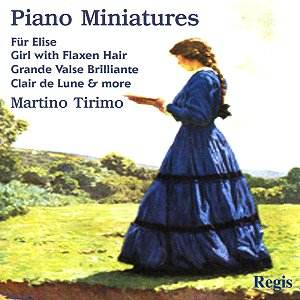 Composer: Gregorian
Composer: Gregorian
Works: Gradual “Beata gens”, Introit “Loquebar”, Gradual “Adjuvabit”, Gradual “Dirigatur”, Gradual “Laetatus sum”, Introit “Puer natus est”, Gradual “Audi filia”, Communion “Vox in Rama”, Alleluia “De Profundis”, Introit “Circumdederunt”, Gradual “Christus factus est”, Trait “Cantemus Domino”, Alleluia “Dominus in Sina”, Alleluia “Candor est lucis”, Repons “Collegerunt”, Alleluia “Omnes Gentes”, Trait “Confitemini”, Communion “Videns Dominus”, Alleluia “Dies sanctificatus”, Offertory “Afferentur”, Introit “Exsurge”, Communion “Panis”, Communion “Passer inveit”
Performers: Abbé Damien Poisblaud
Recording: Recorded in The Abbey of Thoronet (date of recording unspecified)
Label: PAVANE ADW 7239
The recent release of Gregorian chant as performed by Abbé Damien Poisblaud marks a significant entry in the ongoing dialogue surrounding this ancient musical form. Often relegated to the background of musical history, Gregorian chant possesses a depth and complexity that merits renewed exploration and understanding. The works presented here, recorded in the acoustically rich environment of the Abbey of Thoronet, not only challenge preconceived notions about chant but also invite listeners to reconsider the very essence of how such music might have been experienced in its original liturgical context.
Poisblaud’s interpretations are grounded in a scholarly understanding of chant as a living oral tradition rather than a static, written artifact. He effectively captures the nuances of early performance practices, which include the use of just intonation and historically informed vowel pronunciations. These choices yield a sound that, while at times disconcerting to modern ears accustomed to equal temperament, evokes an authentic connection to the past. For example, the gradual “Laetatus sum” reveals a profound emotional resonance, enhanced by Poisblaud’s deliberate pacing and the subtle embellishments that he employs, which are reminiscent of the improvisational techniques that would have flourished among early chant singers.
The recording quality warrants particular mention, as it plays a crucial role in the overall impact of the performance. The Abbey of Thoronet’s reverberant acoustic serves as an ideal setting for the unfolding of these chants. The engineers have successfully captured the ethereal quality of Poisblaud’s voice against the backdrop of the abbey’s architectural splendor, allowing the listener to appreciate the interplay between the soloist’s phrasing and the natural echo of the space. This is especially evident in the Communion “Vox in Rama,” where the haunting resonance envelops the listener, creating an immersive experience that transcends the mere act of listening.
Comparisons with other notable recordings of Gregorian chant reveal both the uniqueness and the richness of Poisblaud’s approach. While many ensembles present chant with a focus on choral harmony and uniformity, this recording emphasizes the individual artistry of the soloist, reflecting a more authentic performance practice. The choice to feature solo interpretations rather than a choir highlights the potential for expressiveness inherent in these works, a perspective that aligns with historical performance practices as outlined in the accompanying booklet notes.
The cumulative effect of this disc is nothing short of revelatory. Listeners are invited to engage with the music on a deeper level, to appreciate not only the melodic contours but the underlying spiritual and cultural significance of each chant. The sheer beauty of the sound, combined with the thoughtful interpretations and the superb recording quality, culminates in an experience that resonates long after the final notes fade. The Abbey of Thoronet becomes not just a backdrop but a character in the performance itself, enhancing the sacredness of the repertoire.
This recording stands as a testament to the enduring power of Gregorian chant and the potential for reimagining its performance in our contemporary context. It is a must-listen for both enthusiasts and newcomers alike, promising to enrich one’s understanding of this profound musical legacy.



